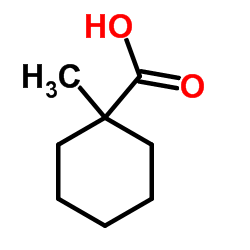| 结构式 | 名称/CAS号 | 全部文献 |
|---|---|---|
 |
1-甲基-1-环己甲酸
CAS:1123-25-7 |
|
 |
环己甲酸
CAS:98-89-5 |
| 结构式 | 名称/CAS号 | 全部文献 |
|---|---|---|
 |
1-甲基-1-环己甲酸
CAS:1123-25-7 |
|
 |
环己甲酸
CAS:98-89-5 |